Results 2,761 to 2,770 of 12095
Thread: Anandtech News
-
03-27-13, 10:31 PM #2761
Anandtech: HandBrake to Get QuickSync Support
The latest version of Intel's Media SDK open sourced a key component of the QuickSync pipeline that would allow the open source community to begin to integrate QuickSync into their applications (if you're not familiar with QS, it's Intel's hardware accelerated video transcode engine included in most modern Core processors). I mentioned this open source victory back at CES this year, and today the HandBrake team is officially announcing support for QuickSync.
The support has been in testing for a while, but the HandBrake folks say that they expect to get comparable speedups to other QuickSync enabled applications.
No word on exactly when we'll see an official build of HandBrake with QuickSync support, although I fully expect Intel to want to have something neat to showcase QuickSync performance on Haswell in June. I should add that this won't apply to OS X versions of HandBrake unfortunately, enabling that will require some assistance from Apple and Intel - there's no Media SDK available for OS X at this point, and I don't know that OS X exposes the necessary hooks to get access to QuickSync.
More...
-
03-27-13, 11:30 PM #2762
Anandtech: Rosewill Blackhawk Ultra Case Review: Were It Not For Competition
We've long maintained that Rosewill's Thor v2 is one of the best deals floating around for enthusiasts. In that enclosure, Rosewill has a product that's fairly feature rich, quiet, and offers stellar performance. Yet the Thor v2 isn't the flagship of their enclosure line, but today we have that flagship in house. Given its predecessor's stellar performance, expectations are pretty high for the Blackhawk Ultra.
More...
-
03-28-13, 10:30 AM #2763
Anandtech: The Razer Edge Review
This story starts in a dark meeting room in the back of Razer’s booth at CES 2012. I’m sitting with CEO Min-Liang Tan, who is walking me through the intriguing Project Fiona concept gaming tablet. A number of major manufacturers announced Tegra 3 and OMAP4-based Android slates at CES 2012, but Project Fiona stood out – instead of an ARM SoC, it ran a Core i7 CPU, Nvidia graphics, and Windows 7. At the time my guess was an i7-2617M ultra-low voltage processor and an Nvidia GT 520M, though I never got a confirmation on either spec from Razer. In addition to the powerhouse specs, the tablet had handles resembling two Wii nunchucks attached to either side. Even with a small 10.1” display, the performance-oriented silicon and gamepad combined for a tablet that was big, hot, and heavy. Clearly, not an ideal solution, but the concept had obvious potential and was almost a lock to reach production eventually. It walked away from Las Vegas with a handful of awards.
Eventually turned out to be today, and so we have the Razer Edge. Read on for our full review.
More...
-
03-28-13, 05:30 PM #2764
Anandtech: Best Budget Ultrabook, March 2013
We’re planning to start a regular revolving list of recommended products at AnandTech—sort of like a mini buyer’s guide focused on a single product or component. Anand has asked me to kick things off with a look at the notebook market. Initially, I wasn’t sure if I could find anything I was really comfortable recommending, considering Haswell is right around the corner and Richland APUs have been announced by AMD and should start showing up in laptops in the next month or two. But then I took a look around and found that there are some decent laptops that appear to be on clearance, making way for the next round of new products.
With that in mind, I tried to find what I felt was the most compelling offering right now, and somewhat surprisingly I ended up with an Ultrabook. To be clear, Ultrabooks aren’t the be-all, end-all of laptops; they’re great for portability and performance for general use applications is usually adequate, but they’re generally not gaming powerhouses and even battery life often gets compromised in pursuit of a small size. I’ll have some other recommendations for laptops over the coming weeks, but for now I’m specifically looking at the ultrathin class of offerings. The key things I like to see in an Ultrabook are pure solid state storage, a good LCD, and the lower the price the better; that brings me to VIZIO.
Last month, Vivek posted his thoughts on the VIZIO CT15 “Thin+Light” Ultrabook. Note that the Windows 8 variants updated the touchpad and that they’re better than the original release, but they’re still not perfect. However, a good price can go a long ways towards making a product acceptable, and right now the CT14 with 128GB SSD is available for $680 at Amazon.com. (Note that this is basically a discontinued product, and even VIZIO has a list price of $599 on their store—except they’re sold out.) Not only does that make this one of the least expensive Ultrabooks around right now, but for the price you still get a 128GB SSD, Core i5-3317U processor, and best yet: a 1600x900 high quality IPS display.
Does that make this the best current Ultrabook? For the money, I would say yes, though I don’t know how long supplies will last. There are other issues that need to be mentioned as well: the keyboard still flexes a fair amount when you type (and lacks backlighting), the RAM can’t be upgraded, opening the lid can be a bit more difficult that I’d like, and battery life is merely so-so. However, when you look at competing offerings you often end up with other compromises (poor quality LCDs being a major one), and most of those cost more than the CT14 and come with a hard drive and caching SSD.
Bottom line: if you have to buy an Ultrabook today, unless you’re willing to pay substantially more money (like $1100+), this is the one I’d recommend. Otherwise, wait and see what Haswell and Richland bring to the table in terms of Ultrabook/ultraportable options; they’ll likely cost more than the VIZIO’s sub-$700 price, but they’re likely to make up for that with higher performance, improved battery life, and better build quality. VIZIO will likewise be offering touchscreen updates of the CT14 and CT15 with the new CPUs/APUs and they also fix the keyboard complaints; we just need to see where they’re priced when they launch.
Gallery: Best Budget Ultrabook, March 2013_thumb.jpg)
_thumb.jpg)
_thumb.jpg)
_thumb.jpg)
_thumb.jpg)
_thumb.jpg)
More...
-
03-28-13, 11:30 PM #2765
Anandtech: HP EliteBook Folio 9470m Ultrabook Review: Ultrabooks in Enterprise
Something funny happened when a lot of us weren't really paying attention last year: Intel's nascent "ultrabook" specification and definition quietly expanded and, in the process, sort of redefined what a notebook was. In their own circular way, Intel created a brand and changed the way notebooks were built (with ULV Ivy Bridge leading the way); I'm sure it's no coincidence that this trademarked product name has only squeezed AMD further. Ultrabooks that were 14" and larger weren't as rigidly confined by the definition as ones below that threshold, but they're still smaller creatures than the notebooks of old. HP's EliteBook Folio 9470m is one of these newer beasts.
More...
-
03-29-13, 12:00 AM #2766
Anandtech: Best Budget Ultrabook, March 2013
We’re planning to start a regular revolving list of recommended products at AnandTech—sort of like a mini buyer’s guide focused on a single product or component. Anand has asked me to kick things off with a look at the notebook market. Initially, I wasn’t sure if I could find anything I was really comfortable recommending, considering Haswell is right around the corner and Richland APUs have been announced by AMD and should start showing up in laptops in the next month or two. But then I took a look around and found that there are some decent laptops that appear to be on clearance, making way for the next round of new products.
With that in mind, I tried to find what I felt was the most compelling offering right now, and somewhat surprisingly I ended up with an Ultrabook. To be clear, Ultrabooks and ultraportables aren’t the be-all, end-all of laptops; they’re great for portability and performance for general use applications is usually adequate, but they’re generally not gaming powerhouses and even battery life often gets compromised in pursuit of a small size. I’ll have some other recommendations for laptops over the coming weeks, but for now I’m specifically looking at the ultrathin class of offerings. The key things I like to see in an Ultrabook are pure solid state storage, a good LCD, and the lower the price the better; that brings me to VIZIO.
Last month, Vivek posted his thoughts on the VIZIO CT15 “Thin+Light” laptop. Note that the Windows 8 variants updated the touchpad and that they’re better than the original release, but they’re still not perfect. However, a good price can go a long ways towards making a product acceptable, and right now the CT14 with 128GB SSD is available for $680 at Amazon.com. (Note that this is basically a discontinued product, and even VIZIO has a list price of $599 on their store—except they’re sold out. [Update: Now back in stock at $849]) Not only does that make this one of the least expensive Intel-based ultraportable around right now, but for the price you still get a 128GB SSD, Core i5-3317U processor, and best yet: a 1600x900 high quality IPS display.
Does that make this the best current ultraportable? For the money, I would say yes, though I don’t know how long supplies will last. There are other issues that need to be mentioned as well: the keyboard still flexes a fair amount when you type (and lacks backlighting), the RAM can’t be upgraded, opening the lid can be a bit more difficult that I’d like, and battery life is merely so-so. However, when you look at competing offerings you often end up with other compromises (poor quality LCDs being a major one), and most of those cost more than the CT14 and come with a hard drive and caching SSD.
Bottom line: if you have to buy a laptop today and you want an Ultrabook or ultraportable, unless you’re willing to pay substantially more money (like $1100+), this is the one I’d recommend. Otherwise, wait and see what Haswell and Richland bring to the table in terms of Ultrabook/ultraportable options; they’ll likely cost more than the VIZIO’s sub-$700 price, but they’re likely to make up for that with higher performance, improved battery life, and better build quality. VIZIO will likewise be offering touchscreen updates of the CT14 and CT15 with the new CPUs/APUs and they also fix the keyboard complaints; we just need to see where they’re priced when they launch. Interestingly, I believe VIZIO is forgoing the Ultrabook aspect on the refresh, as they're switching to standard voltage CPUs. [Update: VIZIO just posted the updated specs and MSRPs for the touchscreen models. Hopefully street pricing is quite a bit lower.]
Gallery: Best Budget Ultrabook, March 2013_thumb.jpg)
_thumb.jpg)
_thumb.jpg)
_thumb.jpg)
_thumb.jpg)
_thumb.jpg)
More...
-
03-29-13, 06:30 AM #2767
Anandtech: AMD Announces "Radeon Sky" Family of Server-Cloud Video Cards
Catching up on announcements from GDC 2013, we’ll kick things off with AMD. Though AMD doesn’t use traditionally GDC to formally launch consumer products since it’s not a consumer show, when it comes to professional hardware this is another story. To that end AMD is using GDC 2013 to announce some new professional products.
AMD’s first announcement out of the show is a new line of server video cards. Dubbed the Radeon Sky family, these are new cards based on AMD’s existing Pitcairn and Tahiti GPUs, targeted for use in cloud gaming deployments. These are passively cooled cards intended to be sold directly to cloud gaming providers, and despite the Radeon name are not consumer cards.
Altogether there will be 3 Sky cards, the 900, 700, and 500. The 900 is a dual-Tahiti card (not too unlike the FIrePro S10000), meanwhile the 700 is a single-GPU Tahiti card, and finally the Sky 500 is a Pitcairn card. We know the number of enabled CUs for each along with memory clockspeeds, but AMD has not published the core clockspeeds. Given the power and thermal constraints of a server environment, it’s a safe bet this won’t be as high as consumer Radeon desktop cards.
Coupled with the Sky series is a new piece of software from AMD called RapidFire technology. Unfortunately we don’t have much in the way of details on it at this time. The first two aspects of it – “low latency” and “HD image quality” – are essentially just branding AMD’s Video Codec Engine (VCE) hardware video enecoder. We do not know at this time quite where AMD is going on the subject of multiple video steams; this may be their branding for utilizing virtualization to run multiple game instances on a single GPU in order to achieve high server densities, but we’ll follow this up when we know more.
Radeon Sky cards will start shipping in Q2 of this year, and AMD is already demoing them to press and partners alike now. AMD is making a direct-pitch play for the cloud gaming space, joining the rest of the gaming industry in believing that cloud gaming stands to become a multi-billion dollar market very quickly, and one they want to be a part of. The Radeon Sky series will be going up against NVIDIA’s GRID cards in this space, which are the hardware backing their GeForce GRID initiative.
More...
-
03-29-13, 07:30 AM #2768
Anandtech: AMD Teases Official Radeon HD 7990
Continuing our AMD GDC 2013 coverage, the other bit of major AMD news coming out of GDC 2013 involves a consumer product after all. But not strictly as a product announcement. Rather this is more of a product tease coming out of AMD. That tease? The Radeon HD 7990.
Since the latter half of 2012, AMD partners such as PowerColor and Asus have been offering what we’ve been calling “officially unofficial” Radeon HD 7990 cards. Officially, AMD doesn’t have a 7990 SKU, but at the same time AMD will approve multi-GPU Tahiti designs, and bless them with the right to be called a 7990. So officially the 7990 doesn’t exist yet, and yet unofficially it’s been offered for months now.
With that in mind, the 7990 will be moving from officially unofficial status to just outright official status. Ending their GDC presentation, AMD’s final item was a tease of their official Radeon HD 7990 design, with word that it’s coming soon. Real soon in fact, as we later found out DICE had been using some of these 7990 cards to power their Battlefield 4 demo elsewhere at GDC.
As this is a teaser AMD isn’t saying anything about the card beyond the fact that it’s a dual Tahiti card just as the unofficially official 7990s were. But even from the few pictures they’ve strategically provided we can infer a few things.
First and foremost, it’s a complete open-air cooler. AMD’s previous dual-GPU cards have all employed some kind of blower; up through the 300W 5970 they were full blowers, and the 375W 6990 was a split blower. Open air coolers have generally high performance, but they do require a breezy case since they’re not very capable of pushing hot air out on their own. The design essentially punts cooling off to the case, which is not always a bad thing since this affords much larger – and thereby slower and quieter – cooling fans.
Second of all, we can see something about the power delivery system. Two 8pin PCIe connectors are visible, which would put power at or under 375W. AMD has always shipped their cards with the proper connectivity to pull their rated power at stock, so as long as they’re holding to that this puts an upper-limit on where the 7990’s TDP would be at stock. This would be notably lower than the unofficial cards, which are closer to 500W (though admittedly also designed for liberal overclocking). Meanwhile we can also just see the edge of the VRM circuitry; the Volterra ‘C’ is visible on the edge of what appears to be a Volterra multi-phase inductor. Volterra is widely considered to offer some of the best VRM circuitry in the industry, and has been found on previous generation AMD dual-GPU cards.
In any case, we’ll be following this up as AMD releases more information. The fact that an official 7990 is appearing now makes it hard to argue that AMD isn’t late to the party – we’re coming up on a full year since the GeForce GTX 690 – but with AMD keeping Tahiti through Q4 there’s really no reason not to do it. So we’ll have to see just what AMD comes up with, and how their design differs from the unofficial cards that have come before it.
More...
-
03-29-13, 12:30 PM #2769
Anandtech: A Visual Guide to the iPhone 5 on T-Mobile
The new unlocked iPhone 5 that will be available via T-Mobile doesn't add any additional functionality in this case. As you can see, both A1428 revisions support the same LTE bands.This is normally Brian's beat but with him busy putting the finishing touches on his review of HTC's One, I thought I'd help out. We're still seeing (and hearing) a lot of confusion about what T-Mobile announced earlier this week with regards to existing and future iPhone support on its network. Brian already went through all of this in his excellent article on the topic, but seeing continued confusion I thought I'd whip up a few diagrams to help explain.For the purposes of this article I'm focusing on compatibility for the current AT&T iPhone 5 (hardware model A1428) as well as the new unlocked iPhone 5 (also hardware model A1428) that will be shipping start April 12. The easiest question to answer is will existing AT&T iPhone 5s that have been unlocked work on T-Mobile's recently deployed LTE network. The answer is an emphatic yes. The original AT&T iPhone 5 was designed to work on LTE band 17 (700MHz) and band 4 (1700MHz), a superset of T-Mobile's LTE deployment (band 4). If you're in one of the few areas with T-Mobile LTE service and an existing unlocked AT&T iPhone 5, the combination will work just fine. Apple will need to release an updated carrier bundle (.ipcc file) for the phones, which I assume is coming soon - but there's no hardware change required.
Where it gets somewhat complicated is in the 3G WCDMA discussion. I emphasize somewhat because it's really not that hard to understand. The complexity comes from the fact that there are a number of names and acronyms here that aren't well understood by most who aren't of Klug-descent. If we focus on the frequency bands themselves and ignore their common names, things are a bit easier to understand.
The original AT&T iPhone 5 supported 3G operation on band 5 (850MHz) and band 2 (1900MHz). Only band 2 overlaps with T-Mobile's network. The problem with 1900MHz on T-Mobile is that the majority of that spectrum is used for 2G and hasn't yet been migrated over to 3G. The bulk of T-Mobile's 3G currently exists in band 4 (1700MHz uplink, 2100MHz downlink), which isn't supported on the existing AT&T iPhone 5.
After April 12th, the new unlocked A1428 iPhone 5 with band 4 WCDMA support will begin rolling out and should have much better coverage on T-Mobile's 3G network as a result. The diagram and toggles below help illustrate this:
The original A1428 iPhone 5 lacks band 4 support, which means it'll only support WCDMA on band 2. The only problem here, as I mentioned above, is that T-Mobile's 3G deployment on band 2 isn't ubiquitous - so in many cases you'll fall back to 2G/EDGE speeds. The new iPhone 5 simply enables band 4 WCDMA support. There's one other benefit to the new iPhone 5. DC-HSPA+ (42Mbps max downlink) is now supported on all bands as well. Although it was never (and likely will never ever be) used by AT&T, DC-HSPA+ was a feature of the iPhone 5. T-Mobile on the other hand does use carrier aggregation on WCDMA in some markets and the new A1428 will benefit from higher speeds in those situations. That's it.
More...
-
03-29-13, 12:30 PM #2770
Anandtech: Unreal Engine 4 Infiltrator Demo from GDC [video]
The folks at Kotaku spotted a video of Epic's Unreal Engine 4 demo from GDC on YouTube. The video is really a tech demo of Epic's UE4 technology and not any upcoming IP, but in usual Epic fashion it looks downright impressive. Even more exciting is the fact that the demo was run entirely on a single GeForce GTX 680. With the next generation of game consoles targeting GPU performance under that of a 680, the performance target makes sense.
Fortnite will be Epic's first game to use Unreal Engine 4. We can also expect UE4 to make its way onto mobile devices as well thanks to the excellent UDK for Android and iOS.
More...
Thread Information
Users Browsing this Thread
There are currently 5 users browsing this thread. (0 members and 5 guests)




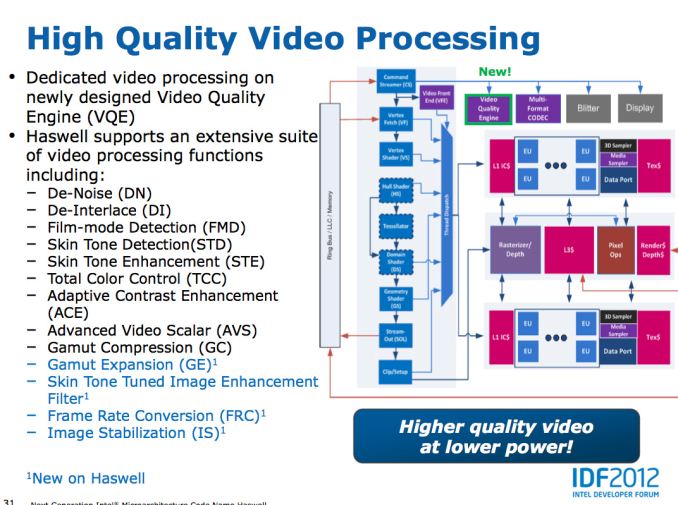

 Quote
Quote_575px.jpg)
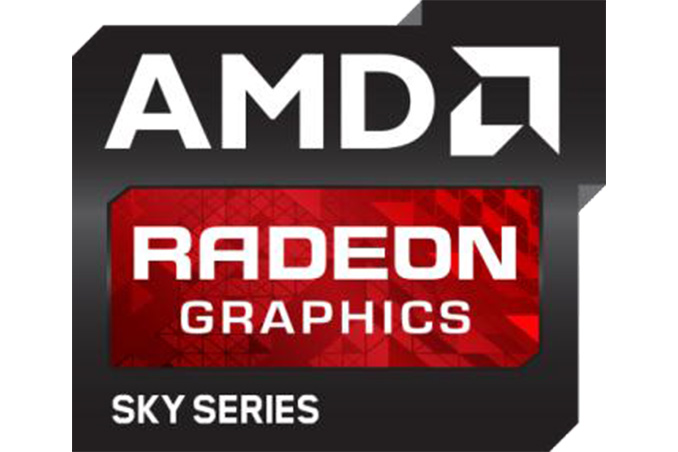
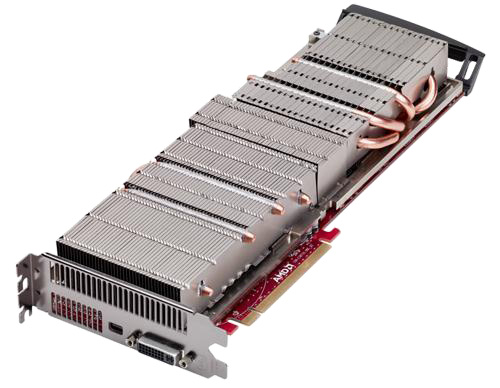

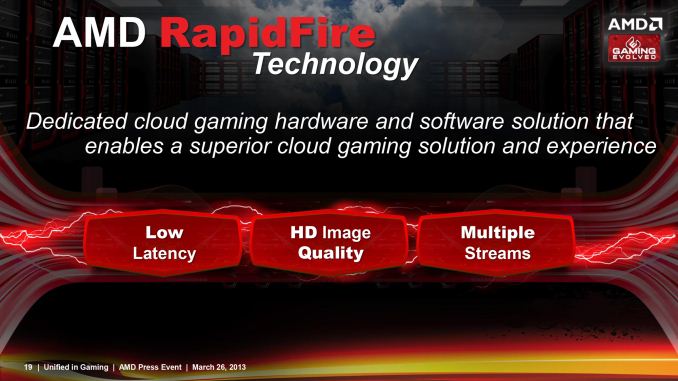
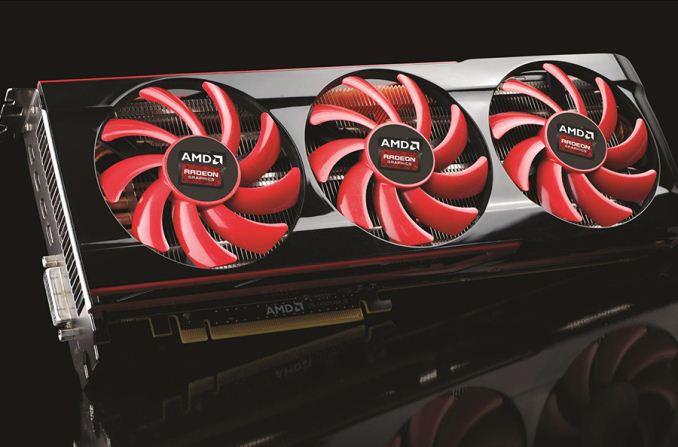
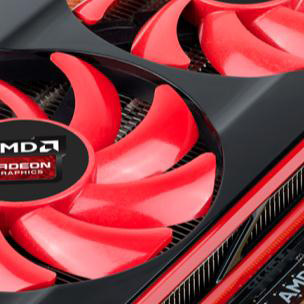

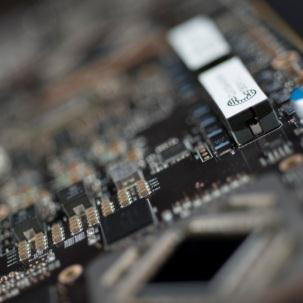
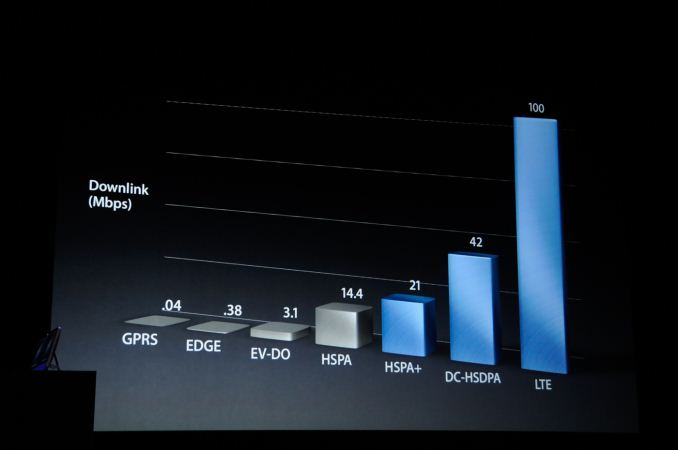

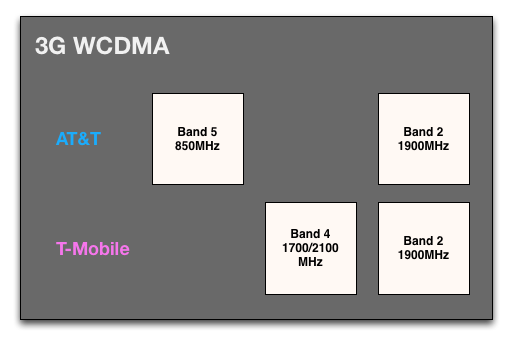

















Bookmarks